El Suunto 3 Fitness se aleja del cliente tipo habitual de la empresa finlandesa. Este reloj no está pensado para los amantes de la montaña o la aventura. O aquellos que practican deporte durante horas y horas. En su lugar Suunto ha creado un reloj para los practicantes del fitness ocasional. Y a pesar de practicar ejercicio de forma casual quieren algo más que una simple pulsera de monitorización de actividad.
Dicho de otra manera, es un reloj destinado a las personas activas que les gusta entrenar para mantenerse en forma pero sin ningún tipo de objetivo competitivo.
Si hay algo que destaca notablemente del nuevo 3 Fitness de Suunto son sus entrenamientos adaptativos. Son planes muy simples, pero a la vez muy fáciles de seguir. Es cierto que el algoritmo no depende de Suunto, pero sí lo hace la implementación sobre el reloj y cómo interfiere con todas sus funciones.
Recuerda que si te gusta la prueba y quieres compensar mi trabajo, puedes hacerlo comprando a través de los enlaces que facilito. Además de beneficiarte de un magnífico precio una pequeña parte de dicha compra irá destinada a pagar tanto mi trabajo como los gastos que todo esto conlleva.
¿Quieres conocer todos los detalles de la nueva propuesta de Suunto? Comencemos.
Navegar a secciones específicas
Resumen
Funcionamiento global - 8
Posibilidades de entrenamiento - 9
Plataforma y aplicaciones - 7.5
Autonomía - 8
Acabados y comodidad - 9.5
Relación precio/prestaciones - 7
8.2
TOTAL
Suunto hace entrada en un nuevo segmento en el que no había tenido ninguna representación hasta ahora. Y para hacerlo va de la mano de Firstbeat, dotando al Suunto 3 Fitness de uno de sus últimos algoritmos.
Todo la funcionalidad del reloj alrededor de este algoritmo, pero además los finlandeses han conseguido empaquetar casi todas las prestaciones de los hermanos Spartan en un reloj de tamaño muy reducido.
No, no tiene GPS y quizás sea su mayor pega si lo comparamos con relojes del mismo rango de precios. Pero tal vez en este modelo no sea del todo necesario. Al menos no para todo el mundo.
Lo mejor
- Entrenamientos adaptativos fáciles de usar
- Tiene casi todo lo que tiene un Spartan en un tamaño reducido
- Peso muy ligero
- Realmente cómodo en la muñeca
- Monitor de actividad muy completo
Necesita mejorar
- En ocasiones en la pantalla de frecuencia cardíaca muestra «–» durante el ejercicio (pero extrañamente los datos sí quedan grabados de forma correcta)
- Sin GPS, sólo soporta GPS asistido a través del teléfono móvil
- Registra numerosos datos de actividad diaria, desgraciadamente muchos de ellos no se sincronizan a ningún sitio
Suunto 3 Fitness, aspectos básicos
La experiencia de usuario que puedes obtener con el Suunto 3 Fitness es prácticamente la misma que la de sus hermanos mayores, los Spartan. Los menús, ubicación de opciones, pantallas para el reloj… todo es idéntico y está situado en el mismo lugar.
A tener en cuenta, eso sí, que al igual que ocurre con el Suunto Spartan Trainer el Suunto 3 Fitness no tiene pantalla táctil. Para su control utilizamos 5 botones en la disposición clásica de la marca: tres a la derecha y dos a la izquierda.
Los materiales utilizados por la marca finlandesa no defraudan. A pesar de no ser un modelo de la gama alta y de tener un peso muy contenido (sólo 36 gramos) la sensación de producto de calidad es buena, especialmente por su bisel en acero inoxidable -que puede ser de varios colores, dependiendo de la configuración elegida-.
La calidad de la pantalla es francamente buena. Resolución y contraste están a muy buen nivel, e incluso es algo más clara que la pantalla de los Spartan, como si estuviese más cerca del cristal. Con la iluminación apagada es más fácil ver la información en la pantalla del 3 Fitness que si lo hacemos en la pantalla de los Spartan, algo que se nota especialmente a la hora de recibir notificaciones en la pantalla del reloj.
Donde sí hay una diferencia notable es en los perfiles de deporte. Sí, disponemos de más de 70 perfiles deportivos que podemos usar (incluyendo carrera, natación en piscina, ciclismo, aerobic, yoga, remo, etc), pero no podemos realizar cambios sobre ellos ni elegir nuestra configuración de pantallas de datos. Por tanto tenemos que ver la información de la manera que Suunto ha decidido.
Dado el tipo de cliente objetivo de este modelo no considero que se trate de un problema, al contrario, creo que es algo positivo y que ayuda a tener un reloj básico y de uso extremadamente sencillo. Eso sí, si antes de comenzar una actividad te desplazas hacia abajo sí encontrarás distintas opciones que puedes modificar, como establecer objetivos (tiempo, distancia o intensidad por frecuencia cardíaca), configurar intervalos; o cambiar detalles básicos como la luz de fondo o el modo de ahorro de energía.
Si has seleccionado un perfil de deporte «de exterior», como el Suunto 3 Fitness no tiene GPS interno te ofrece la posibilidad de utilizar los datos de posicionamiento de tu teléfono móvil. De esa forma grabará el track de tu entrenamiento y los datos de ritmo/velocidad y distancias serán más preciosos. Como es lógico si no llevas el teléfono no podrás registrarlo.
Así que si sales a correr con tu teléfono móvil tendrás los datos de ritmo y distancia gracias al GPS de éste, en caso contrario el reloj utilizará el acelerómetro interno para hacer la estimación. El margen de error es mayor, pero si has hecho una calibración (básicamente correr en el exterior con GPS al menos una vez) y no haces grandes cambios de ritmo, el dato es bastante cercano a la realidad.
Aunque el reloj dispone de sensor de pulso óptico Suunto también permite que conectemos sensores de pulso externo. Este sensor puede ser el propio de Suunto o de cualquier otra marca, siempre que utilicen tecnología Bluetooth Smart. No es el único sensor soportado, también permite conectar a podómetros y sensores de velocidad/cadencia para ciclismo.
Todo el sistema está muy orientado hacia el registro de frecuencia cardíaca, dada la importancia que tiene en el reloj el entrenamiento adaptativo que veremos a continuación, por lo que las pantallas de datos están bastante enfocadas a esto con gráficas variadas de este dato.
Cuando finalizas la actividad también hay acceso a esa gráfica de frecuencia cardíaca completa para todo el ejercicio, así como al resto de información post-entrenamiento con los mismos datos que se muestran en los Spartan. Esta pantalla me parece fantástica no sólo por cómo muestra la información, sino también porque los datos son amplios pero sin llegar a mostrar detalles en exceso (como pasa en el Amazfit Stratos).
Y por supuesto también a la aplicación del teléfono móvil, llamada simplemente «Suunto».
El Suunto 3 Fitness no es compatible con Movescount, pero si quieres revisar los datos de tus entrenamientos desde el ordenador puedes hacerlo desde la otra plataforma, de la que Suunto también es propietaria (a través de Amer Sports): Sports-Tracker. Aunque en este caso la información es bastante básica no sólo comparado con Movescount, también con lo tenemos en la app de Suunto.
Al menos desde esta web es donde podrás descargar el archivo de actividad en caso de querer enviarlo a Strava u otras plataformas, porque a día de hoy no hay sincronización entre ambas plataformas (Movescount y Sports Tracker).
Entrenamiento adaptativo
La razón de ser del Suunto 3 Fitness no es otra que lo que llaman entrenamiento adaptativo. Es algo que no se encuentra en ningún otro reloj de Suunto y que sólo está presente en el 3 Fitness (al menos de momento). No es el primer modelo en incorporarlo, el Amazfit Stratos se benefició de este algoritmo de Firstbeat.
Pero no todo es integrar el algoritmo, también hay que adaptarlo y hacer que sea útil. Y mientras que en el Amazfit es simplemente una opción más enterrada entre los menús a la que no le dan ninguna importancia, en el caso de Suunto todo el reloj gira alrededor de esta función, dándole máximo protagonismo.
¿Y qué es el entrenamiento adaptativo? Es simplemente la forma en la que Suunto facilita planes de entrenamiento que, en lugar de ser rígidos y prefijados independientemente del perfil del deportista, en este caso se construyen en referencia a tu nivel de forma física (gracias a la estimación de VO2Max), entrenamientos realizados y perfil de usuario (edad, altura, peso, etc.).
Con todos estos detalles, el algoritmo construirá un plan de entrenamiento a siete días para mantenerte en tu nivel de forma física.
Por supuesto no todo acaba aquí, sino que el plan de entrenamiento es abierto por lo que si un día no puedes entrenar, el plan se adaptará; al igual que si tu entrenamiento del día es más intenso que lo que el reloj sugería los entrenamientos sucesivos se adaptarán en consecuencia.
Simplemente para que quede claro, esto no trata de que entres en la aplicación y le pidas a Suunto que te ponga un plan de entrenamiento base para correr, por ejemplo, una media maratón. Trata de mantener tu nivel de entrenamiento basándose en los datos que introduces en el reloj y la información que obtiene de tu uso.
¿Y cómo funciona todo esto? Ya desde el resumen del día (nada más levantar cuando te indica cómo las horas durmiendo) te indicará cuál es el plan para hoy.
No es el único sitio. Además del propio calendario, si es un día de entrenamiento aparecerá en cuanto intentes elegir un perfil de deporte para que no se te olvide qué es lo que toca hacer hoy.
Te indicará cómo debes hacer el entrenamiento para cumplirlo.
Y a continuación podrás intentar seguir el plan en cualquiera de los deportes soportados; ya sea corriendo, bailando o haciendo spinning. Eso ya es cosa tuya.
Básicamente debes mantener la frecuencia cardíaca en el rango indicado en la imagen. Se puede decir que es algo simple, pero es apropiado para la mayoría especialmente si no tienes objetivos especiales ni eres un atleta avanzado.
En la pantalla del reloj aparecerá mensajes brevemente indicándote que debes acelerar o reducir la intensidad si te encuentras fuera de la zona programada.
Nuestro objetivo es cumplir con el tiempo e intensidad marcado. Todo minuto que pases fuera de esa zona no contará para el total marcado. Si tienes que estar entre 145 y 160 pulsaciones, no «acumularás» minutos si estás a 140 ppm ni a 190 ppm.
¿Que ocurre si por el motivo que sea no cumples con el objetivo o lo excedes? No te preocupes, porque el plan de entrenamiento se adaptará nuevamente. Si has ido más largo la siguiente sesión será más suave, y si has remoloneado para el próximo día se acordará que necesitas algo más de caña.
En cualquier momento podrás ver cómo va tu semana y qué es lo que queda por delante. Dentro de las pantallas disponibles puedes acceder a la que te muestra el tiempo de entrenamiento, comparado con nuestro objetivo semanal.
En definitiva, lo que obtienes es un concepto que promete bastante. Los planes son muy sencillos de seguir, lo cual me parece más que apropiado para el usuario al que está destinado el Suunto 3 Fitness. Y es un buen detalle poder ver cual es el entrenamiento que tenemos para los próximos días directamente en el reloj, algo que como digo el Amazfit no hace.
Monitor de actividad
En la parte de seguimiento de actividad diaria el Suunto 3 Fitness de nuevo recibe todas las funciones que se puede encontrar en sus hermanos de gama. Para dar un repaso a todas estas funciones, si te parece, veamos todo lo que ofrece en el menú y cuáles son los datos que registra.
Todo lo que se refiere a la parte de seguimiento de actividad se encuentra en la parte «inferior» del menú. Dando un toque al botón inferior derecho lo primero que nos encontramos es la pantalla de medición de pulso instantáneo. En esta pantalla puedes comprobar tu frecuencia cardíaca actual. Adicionalmente, pulsando el botón central, podrás revisar la frecuencia cardíaca de las últimas 12 horas en una gráfica bastante elegante y completa.
El Suunto 3 Fitness no tiene un registro constante de pulsaciones como sí podemos ver en modelos de otras marcas. Toma un registro cada diez minutos, para no castigar en exceso a la autonomía. Pero esto no es la peor parte, ya que tener una gráfica perfectamente construida tampoco será un detalle que interese a la inmensa mayoría de los usuarios.
Donde está el problema es que Suunto, por el momento, no sincroniza estos datos a ningún sitio. Es decir, pasadas esas 12 horas todas las gráficas y registros pasan a mejor vida. Que puede que no te resulte importante o carezca de interés. Pero entonces… ¿para qué registrarlo?
A continuación encontramos dos nuevas pantallas que se han estrenado con el Suunto 3 Fitness (y que de aquí han llegado al resto de la gama Spartan). Son las pantallas de estrés y recuperación, una buena guía para saber cómo te encuentras físicamente y cuánta energía tienes para encarar los entrenamientos del día.
En la primera de ella te mostrará cuál es tu estado actual (activo, inactivo, en tensión o en recuperación) y depende del sensor de pulso óptico y de la medición de variabilidad del pulso. Como suele ser habitual en este tipo de algoritmos, corre a cargo de Firstbeat.
Si pulsas el botón central podrás ver tu nivel de recursos. Es decir, la energía que tienes disponible para realizar un entrenamiento.
Nuevamente estos datos tampoco aparecen en ningún otro lugar y, una vez que desaparecen de la pantalla del reloj, desaparecerán también de la faz de la tierra, así que no hay posibilidad de hacer seguimiento de esta métrica a lo largo del tiempo.
Sí hay sin embargo datos que se sincronizan, como son los pasos y las calorías. Es lo que se muestra en la siguiente pantalla disponible, donde podrás ver los pasos que has caminado en el día en curso y las calorías consumidas durante la actividad (junto con las calorías totales incluyendo las calorías basales).
Pulsando el botón central podrás ver gráficas de barras de los pasos y calorías de los últimos siete días. Y en este caso sí, si accedemos a la aplicación podrás ver datos de pasos y calorías que se sincronizan y graban en la plataforma online de Suunto.
Estos datos sí se sincronizan, pero sólo son visibles en la aplicación. Y es que aquí viene la segunda encrucijada que tiene Suunto, y es que está en plena revolución de plataforma. La nueva aplicación móvil sólo sincroniza con Sports-Tracker, una plataforma de entrenamiento que Amer Sports adquirió en 2015. Pero no lo hace con Movescount ni hay posibilidad de configurar una sincronización automática. No queda claro cuál será el futuro de ambas plataformas; si una sustituirá a la otra, se fusionarán, duplicarán sus posibilidades… Todavía es un misterio.
No sólo tenemos seguimiento de la actividad durante el día, si mantienes el reloj en la muñeca por la noche también registrará el sueño y la calidad del mismo. Pero sólo por la noche, aquí no se incluirán posibles siestas que tomes a lo largo del día. Podemos ver gráfica de los últimos 7 días y acceder a los datos de uno de estos días presionando el botón central
Entrando en cualquiera de estos días podrás revisar todos los datos del sueño de ese día: horas durmiendo, calidad del sueño, frecuencia cardíaca media, inicio y final, tiempo despierto y tiempo de sueño profundo
De nuevo, esto también es un dato que se sincroniza con la plataforma, aunque el nivel de datos que muestra es menor que lo que muestra el reloj.
Aquí extrañamente es donde encontraremos nuestros datos de frecuencia cardíaca en reposo de los últimos siete días (que, efectivamente, tampoco se sincroniza).
Por tanto es una medición bastante completa y prácticamente al mismo nivel que otros dispositivos que mayor información aportan. Su aspecto más flojo es la ausencia de sincronización con una plataforma y la pérdida de todos estos datos. Es algo a lo que Suunto debe poner orden y aclararse sobre qué quiere hacer y cuál va a ser el futuro de sus plataformas
Sensor de pulso óptico
Suunto todavía no ha querido ir por el camino de diseñar su propio sensor de pulso óptico, y opta por licenciar tecnología de terceros. Me parece una decisión acertada porque eso les deja tiempo para ocuparse de apagar otros fuegos, o de diseñar otro tipo de cosas en las que sí son especialistas. En Polar tiene sentido, pues siempre han sido pioneros en el registro de la frecuencia cardíaca; pero Suunto siempre ha tenido otros objetivos en mente.
Al igual que en el resto de la gama, el Suunto 3 Fitness equipa un sensor óptico de Valencell, uno de los principales desarrolladores de esta tecnología. Siempre es importante tener datos correctos de frecuencia cardíaca, pero en este caso y debido a los planes de entrenamiento, aún más.
Vamos con el análisis del sensor y veamos cómo se comporta.
Empezaré por algo fácil, carrera a ritmo constante. Es un entrenamiento de poco más de 30 minutos a intensidad media. En este caso la comparativa es contra el sensor óptico del Garmin Forerunner 935 y un sensor de pulso Suunto Smart Sensor, emparejado con un Spartan Baro.
Inicio alterado durante los primeros minutos, como suele ser habitual en todos los sensores. Creo que en este caso el galardón de ese comienzo se lo lleva el Garmin, pues es el que tiene una subida más progresiva y que mejor concuerda con la realidad. Mientras tanto el sensor de pecho y el del Suunto 3 “están a por uvas”.

Otro entrenamiento similar en cuanto a intensidad, pero de algo más de duración. En este caso los tres sensores están en consonancia desde el principio, probablemente por la hora del día en la que hago el entrenamiento (mayor temperatura, flujo sanguíneo más estabilizado).
En este caso los actores son los mismos, pero cambian los sensores. La gráfica del Suunto Spartan es de su sensor óptico integrado (Valencell como el del Suunto 3 Fitness, pero algo más antiguo) mientras que la del Garmin es de un sensor HRM-Tri. Hay algún pico puntual en el que las gráficas no están totalmente alineadas, pero en términos generales los tres relojes concuerdan con el registro.
Sólo hay una ligera diferencia al final del entrenamiento donde ambos modelos de Suunto tienen una subida y bajada repentina de pulso mientras que el sensor de pecho permanece estable.
La teoría diría que es el sensor de pecho el que aporta la información correcta y que los ópticos se equivocan, porque siempre se les tiene en menor estima. Sin embargo, revisando la actividad se puede apreciar como esa subida de frecuencia cardíaca coincide con un cambio de elevación, por lo que es debido a la subida de una cuesta. Hay mayor esfuerzo, por lo que lo normal es que la frecuencia cardíaca suba.
Punto positivo para los sensores ópticos, porque en este caso el sensor de pulso en el pecho de Garmin es el que ha estado perdido.
Empezaré a meter un poco de variación en la intensidad. No es algo tan brusco como un entrenamiento de intervalos, pero sí con parada y vuelta a entrenar.
El entrenamiento comienza nuevamente perfectamente alineado, continuando así hasta que hago una parada alrededor del minuto 18. Como suele ser habitual, los sensores ópticos tienen un ligero retraso en el momento de registrar estas paradas, algo que ocurre tanto con el sensor óptico del Suunto 3 Fitness como el del Garmin FR935. Casualmente los dos se retrasan en similar medida (aunque no se estabilizan igual en el periodo de reposo y hay ligeras diferencias).
Y a la hora de reanudar la marcha se puede apreciar lo mismo, el sensor de pulso en el pecho detecta el cambio de forma inmediata mientras que los ópticos requieren de un par de segundos para hacerlo. Nada que no haya visto ya antes.
A partir de ahí más de lo mismo, tres gráficas que indican los mismos datos y que, en el momento de reducir la marcha, son los sensores ópticos los que detectan el cambio algo más lentamente.
Por último vamos a un entrenamiento de intervalos puro. Esto ya es harina de otro costal y es una prueba que demanda mucho más (del reloj y del que lo lleva). Tras el periodo de calentamiento -donde al inicio el Suunto 3 Fitness tiene un pequeño desliz, pero no demasiado importante-, llega la hora de trabajar. Cinco bloques de 4×200 a tope. Es probablemente la prueba más dura a la que se le puede someter a un sensor óptico, porque los cambios son muy bruscos y los intervalos demasiado breves como para que el algoritmo llegue a comprender qué es lo que estamos haciendo.
Voy a separar los intervalos para verlo más claramente, pero ya habrás visto que aquí si nos encontramos con problemas.
Primer bloque. El Polar M430 más o menos se da cuenta de qué va la película y, aunque con retraso, calca cifras similares a las del sensor de pecho de Garmin. Mientras tanto el Suunto anda perdido y no se entera de la película hasta el último intervalo, aunque sigue quedándose corto en la medición.
En el segundo bloque parece que el Suunto ya se va dando cuenta que esto es algo exigente, y el segundo y tercer intervalo los registra de forma similar al Polar, pero el primero y último de los intervalos de 200 metros se los pierde totalmente.
Similar situación en el tercero, con tres intervalos regulares del Suunto y uno malo. Aún así ninguno de ellos convence.
Y por no ser repetitivo, el cuarto y quinto bloque es una repetición de lo que ya hemos estado viendo.
No es el único entrenamiento de intervalos que he realizado con el Suunto 3 Fitness. De hecho tengo otro similar en los que en lugar del Polar M430 llevo un Suunto Spartan Trainer (con el mismo sensor que el Suunto 3 Fitness) y los resultados son exactamente los mismos.
¿Conclusión? Lo cierto es que esperaba algo más. En primer lugar por el sensor, que ha demostrado sobradamente en el Scosche RHYTHM+ su buen hacer. Naturalmente éste cuenta con la ventaja de tener una mejor ubicación para el registro de frecuencia cardíaca (la muñeca no es precisamente el mejor lugar). Pero también esperaba que tuviese mejor desempeño debido al bajo peso total del reloj.
Mientras mantenemos una intensidad de ejercicio constante la verdad es que el comportamiento es perfectamente válido, pero en cuanto introducimos alguna variación enseguida encontramos problemas. El mismo problema he encontrado con el Spartan Trainer, pero no recuerdo que los Spartan Sport tuviesen un comportamiento tan exagerado en los intervalos. Una de las causas puede ser el menor tamaño del 3 Fitness y del Spartan Trainer, y que a causa de ello no puedan bloquear la luz exterior de forma más eficiente.
No obstante a ritmos constantes el registro es bueno. Y no hay que olvidar que el objetivo del reloj y sus entrenamientos adaptativos es mantenerte en alguna zona de frecuencia cardíaca durante un tiempo determinado, para lo cual ya has visto que cumple perfectamente.
Así que el sensor sin tener un comportamiento de sobresaliente, es suficiente para lo que se le pide. Eso sí, si además de los entrenamientos adaptativos vas a querer hacer algún otro entrenamiento más exigente de cambios de intensidad como intervalos o HIIT, para este caso te recomendaría que utilizaras un sensor de pulso externo emparejándolo a través de Bluetooth, algo que el Suunto 3 Fitness puede realizar sin ningún problema.
Mi opinión del Suunto 3 Fitness
Con el Suunto 3 Fitness puedo diferenciar claramente dos aspectos: el reloj y los servicios añadidos.
Como reloj, materiales y uso en general la propuesta de Suunto me encanta. A pesar de tratarse de su primera incursión en este segmento lo hacen con muy buena nota.
A pesar de tener casi todas las funciones de los Spartan no es un reloj complicado. Si en algo ha destacado la gama Spartan es precisamente en su cuidada interfaz de usuario. Cada vez que se ha añadido alguna función se ha cuidado su implementación con mucho mimo, y todo este trabajo está patente en el Suunto 3 Fitness.
Se trata del primer reloj de este tipo de Suunto, aún así lo pueden situar perfectamente entre los principales modelos del mercado. Eso sí, su competencia es feroz (Apple Watch, Garmin Vivoactive 3, Fitbit Ionic, Fitbit Versa…) e incluso en su propia casa ya que el Suunto Spartan Trainer tiene un precio similar y sí tiene GPS -aunque con peores materiales y sin entrenamientos adaptativos-, pero ofrece razones para poder destacar en el segmento entre todos ellos.
El problema a día de hoy es de sus servicios añadidos. Amer Sports (matriz y propietaria de Suunto) debe comprender que ya no son sencillamente un fabricante de relojes. Ahora son una empresa de software y como tal deben destinar muchos más recursos a contratar desarrolladores.
El 3 Fitness sólo es compatible con la nueva aplicación de Suunto, heredada tras la adquisición de Sports Tracker. A pesar de su buen funcionamiento general y su magnífica presencia es realmente parca en funciones. Son muchos datos los que el Suunto 3 Fitness recoge pero que luego no se sincronizan a ningún sitio.
Suunto tiene un producto ganador entre manos, tanto por posibilidades como por novedoso, pero es necesario que apuesten más fuerte por todos ellos porque la competencia es atroz. Pero tienen ideas diferentes que es lo más difícil. La verdad es que a mi me ha dejado muy buen sabor de boca y lo recomendaría sin ninguna duda, incluso a pesar de estas cosas pendientes de solucionar que tiene.
Es un producto bien hecho y pensado con cabeza, aunque espero y deseo que Suunto sepa poner orden en los servicios añadidos que le acompaña. Las informaciones que tengo es que después de verano habrá novedades importantes en la plataforma (que en calendario Suunto será diciembre), pero una vez que lo hayan solucionado Suunto tiene aquí un caballo ganador para aquel que quiera pagar su precio.
¿Para quién está destinado el Suunto 3 Fitness? Para aquellos que entrenan 3 o 4 veces en semana en gimnasio, natación, spining u otro tipo de clases, pero que no tienen mayor objetivo que mantenerse en forma. Este tipo de usuario quedará bastante satisfecho con lo que Suunto ofrece con este modelo incluso a pesar de las carencias en el apartado del software (algo en lo que Suunto continúa trabajando). La apariencia es realmente buena y resulta muy cómodo en la muñeca; todo ello mientras hace las funciones básicas de reloj inteligente mostrando todo tipo de notificaciones, lo cual seguramente agrade a la mayoría.

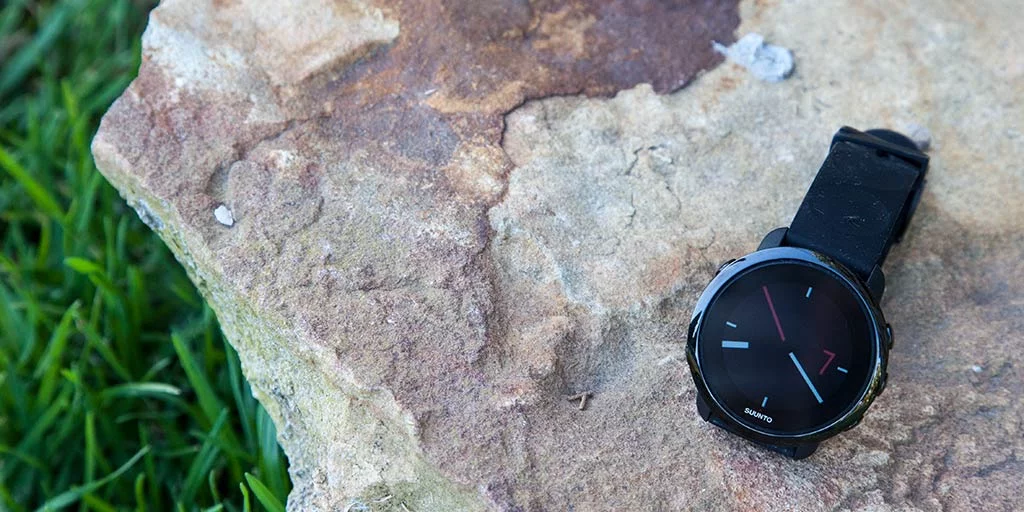

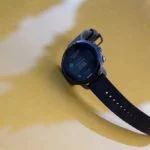
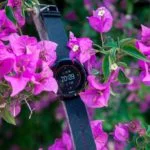
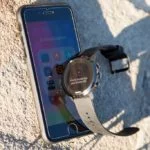
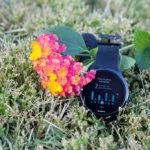







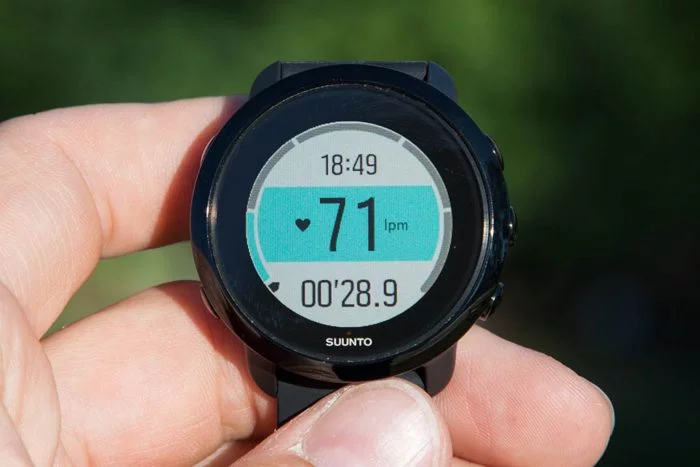





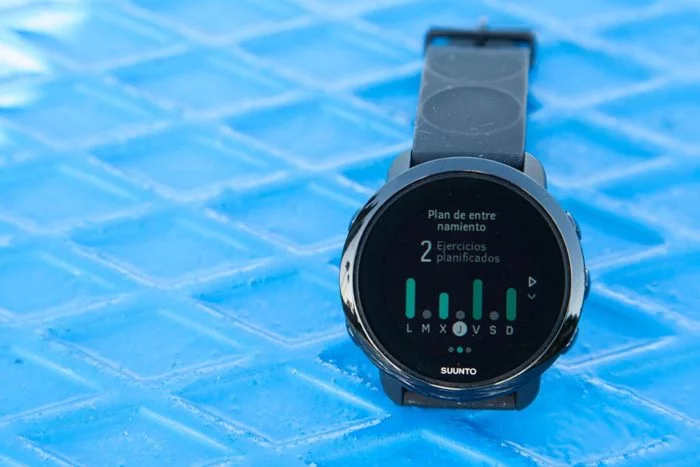








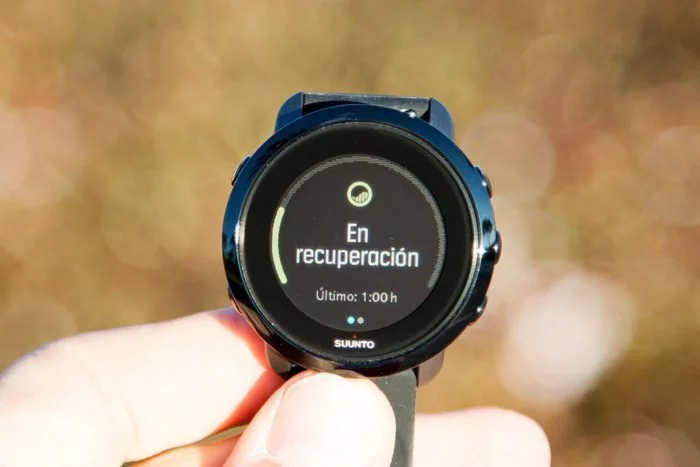

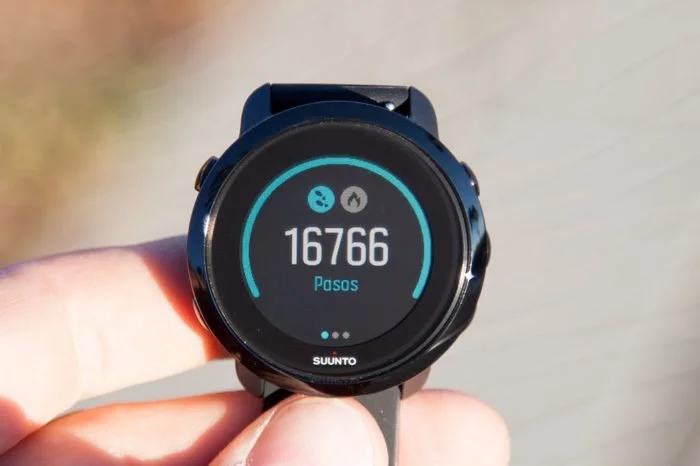
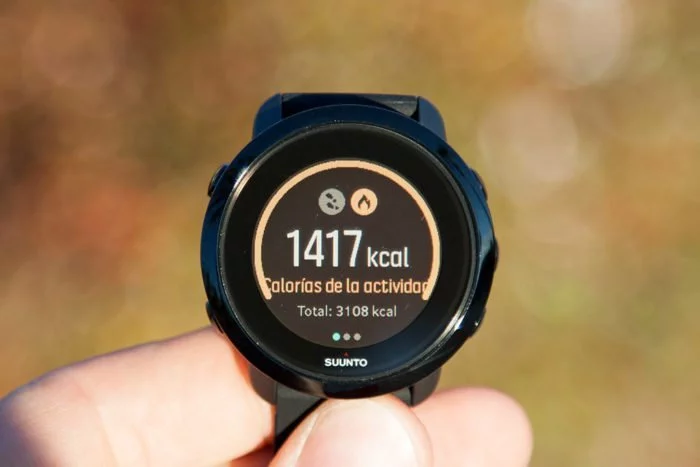













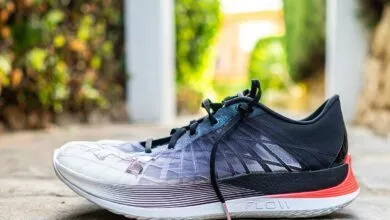
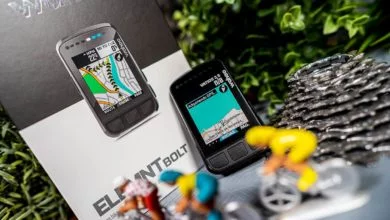
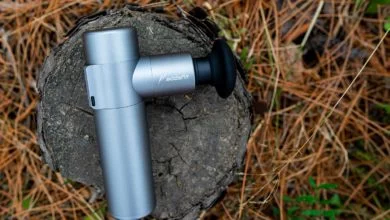
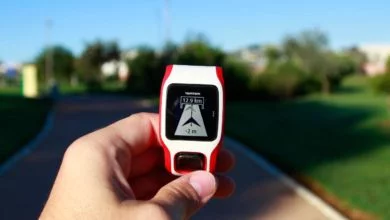
Muy buena review Eduardo,
Una pregunta, el fitness 3 es compatible con stryd?
Muestra la info de potencia? Y el ritmo/distancia?
Muchas gracias
Sí, permite conectar a Stryd como footpod, por lo que los datos de ritmo y distancia vendrían de éste.
En cuanto a la potencia, si no recuerdo mal sí recoge los datos, pero no los muestra en vivo porque no hay un campo de datos para tal efecto (y el reloj no permite configurarlos).
Hola eduardo, estoy leyendo tus reviews y me gustaria si pudieras dsrme una opinion sobre que reloj comprarme, hago deporte en gimnasio 3 o 4 dias a la semana principalmente spining, pesas y aerobic y a veces salgo a correr pero sobre 5km, quiero un reloj que pueda usar en en dia a dia y que monotorice mi actividas. Estoy entre suunto fitness3, garmin vivomove hr o el vivoactive 3, ¿ cual.me recomendarias? Muchas gracias!
Deberías elegir entre el Fitness 3 y el Vivoactive 3, ya dependiendo si lo quieres con GPS o no. El Vivomove HR se te quedará probablemente corto
Hola Eduardo,
una duda / deseo: tengo un Ambit3 Peak maravilloso, toma datos durante horas y horas en el monte pero no tiene nada de seguimiento de actividad física… si combino el Fitness3 para el seguimiento y el Ambit3 para los entrenos tendré posibilidad de trabajar con los entrenamientos adaptativos sincroniizando los datos en la aplicación Suunto? No sé si me expolico bien, no hay un Suunto que lo dé todo y quizás con esta combinación tengo actividad diaria más entrenamientos.
Gracias de antemano
No, el Fitness 3 no tendrá en cuenta los datos grabados por el Ambit3, no hay sincronización entre dispositivos.
Hola Edu, lo primero muchas gracias por el trabajo tan completo que haces.
Me gustaría saber si la estimación que hace el reloj con el acelerómetro para calcular distancias es lo suficientemente exacto como para poder salir a correr/pasear sin el móvil o me merece más la pena decantarme por el Spartan Trainer que sí lleva GPS.
Muchas gracias y un saludo!
Gracias David.
Para pasear es perfectamente suficiente, al igual que para correr sin mayor pretensión que el hacer deporte. Si quieres más prestaciones para carrera, entonces es mejor optar por un reloj con GPS. De todas formas ten en cuenta que el punto fuerte del Suunto 3 Fitness es el entrenamiento adaptativo. Si es lo que te interesa, no lo encontrarás en ningún otro modelo.
Muchas gracias. Será un regalo para mi chica y no es muy exigente respecto a las distancias pero si quiere saber cuánto camina o corre. Tengo que valorar si va a sacar provecho al entrenamiento adaptativo, aunque por precio no se si voy a encontrar un reloj parecido. Tengo un Ambit 2 y mi experiencia con Suunto es inmejorable.
De nuevo muchas gracias por tu rápida respuesta.
Hola David, te quería hace una consulta
Estoy dudando entre comprarme el Suunto 3 fitness o el garmin Vivoactive 3
Soy mujer y hago deporte todos los días pero no soy de montaña sino de gimnasio. Sango a correr pero X la urbanización y hago yoga, pilates, gap, body balance y box
He esto leyendo y aunq el suunto es un reloj que los profesionales recomentadias en las opiniones de los clientes veo muy mala aceptación.
Veo muchísimas críticas por no tener GPS pero yo no lo necesito.
Lo que quiero es un reloj que me lea directamente el cambio de deporte, me controlé el sueño el gasto de calorías y demás y no me cojo una pulsera porque tengo una deficiencia visual y no las veo bien, estos dos relojes tienen las letras más grandes.
Te agradecería me ayudaras a salir de dudas.
Mil gracias!!
Si no necesitas GPS, cualquiera de los dos es perfectamente válido para los requisitos que buscas. La diferencia es que el Garmin tiene funciones más orientadas al reloj inteligente, mientras que en el Suunto tienes los programas de entrenamiento guiados. Otro que no debes descartar es el Fitbit Versa. Es como el Fitbit Ionic pero sin GPS.
Hola Eduardo,
Gracias por el buen trabajo sobre este reloj.
Tengo una duda: hago deporte a diario (spinning, box, pesas…) y muy de vez en cuando salgo a correr pero no de manera habitual por lo que el GPS no me parece imprescindible… lo que sí me gustaría saber es, si sin llevar el móvil, me aparece el ritmo a la hora de correr.
Un saludo
Te aparecerá, pero al no tener una fuente de GPS y mostrar sólo datos del acelerómetro no será demasiado preciso.
Buenas tardes Eduardo, estoy buscando un reloj para quien se inicia en los entrenamiento de gimnasio.
Me gustaría que fuera también un reloj con presencia.
Estoy entre el Garmin Forerunner 45 y el Suunto 3. ¿Me recomiendas alguno de los 2 u otra alternativa?
Por supuesto lo compraré por tu web.
Gracias anticipadas.
Por presencia no creo que destaque ninguno de los dos, pero quizás el Suunto esté un poco mejor hecho.
Te recomendaría el Vivoactive 4